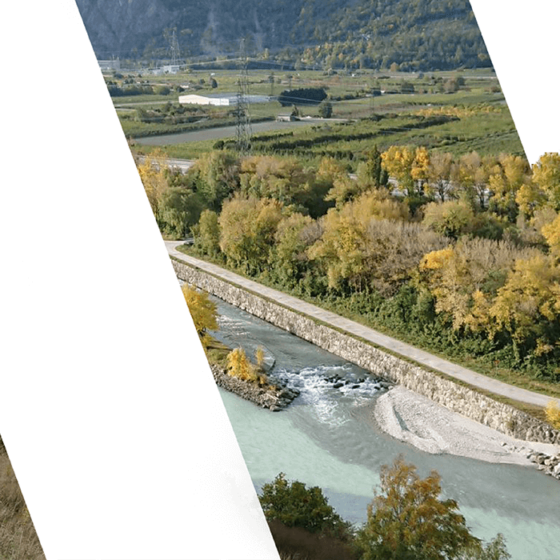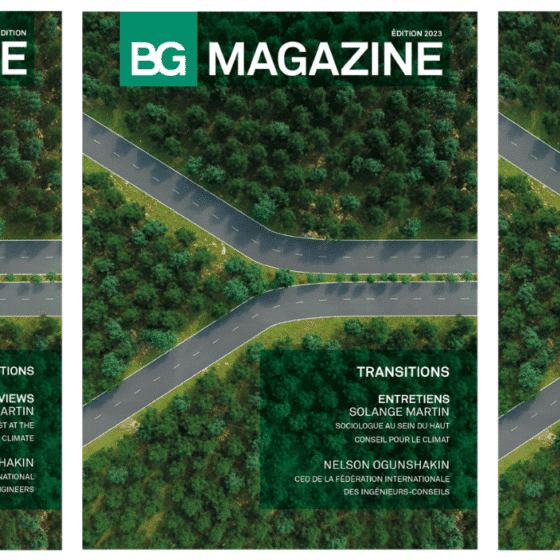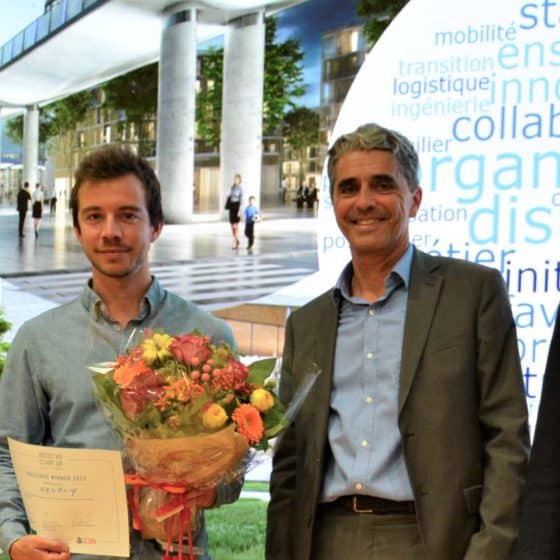“Creating the city of the future will require radical solutions”
Anthropologist and geographer Sonia Lavadinho sees the city of the future as slower-paced, designed to encourage walking rather than high-speed mobility, and to foster interactions between people. It will rely on biomimicry to incorporate solutions inspired by living organisms. Whether with regard to construction, urban planning or mobility, everything needs to be reviewed. Engineers play a key role, but to succeed in this transformation, they must collaborate with multidisciplinary teams from the sciences and humanities. Here is an interview with a down-to-earth utopian.
What is a city? And what led you to take a particular interest in the concept of the city?
Geographer and urbanist Jacques Lévy describes the city as the best solution yet invented to foster interactions between people: The ideal city vastly increases opportunities for more meaningful connections – with our inner self, with our body in movement, with the environment and with other people. My personal interest stems from a fascination with the issue of endotourism (holidaying with friends or relatives): why do we agree to take a plane to go walking in a foreign city, whereas we never walk in our home city? This led to a second question: how can we make people want to walk; how can we create cities that surprise and delight?
Are you advocating for the relational city instead of the functional city? What is the difference between the two?
Through its zoning approach, the functional city advocates the separation of activities, which are connected by high-speed solutions. The relational city encourages a slower pace of life. It proposes incursions, detours, hybrid spaces – possibilities for city-dwellers to take a different approach to space and time, the key aspect being to place a greater value on time. Today, societal organisation is moving in the opposite direction. Until the nineteenth century, it was normal to spend an hour walking, including in the course of one’s work. Today in Switzerland, only 12% of people walk for more than an hour a day. It’s a deliberate choice, and they have organised their lives around time. Walking is another way of seeing the world, which takes into account the texture of the journey, lends substance to our lives and creates memories by forging a relationship with nature, mountains, waterways and living things. Landscapes become entities that resonate within us. We feel connected with this nature that is bigger than us, vibrant and full of life.
Today’s city is colonised by motorised vehicles and characterised by speed. What would it take in concrete terms to achieve a city that surprises and delights?
Radical options are required. We can’t simply keep patching things up. Planting two or three trees isn’t enough to restore the living world to its rightful place. We have to consider the city as a living organism and integrate the metabolic dimension of nature. I really like this idea of creating dwellings in nature, in trees for example, by practising engineering of the living world and of enchantment.
How can this be achieved? And what role would public policy play in this revolution?
In concrete terms, this starts with using alternative solu-tions to asphalt for road and pavement surfaces. We can also step up research on materials, using other types of tarmac or lighting based on bioluminescence, created from bacteria, or even install vertical gardens, like the two green towers in Milan, on a large scale. The prototypes exist, but what is lacking today is the will to implement them in order to move away from the all-concrete approach. The challenge is political, not technical. We should include the objective of greening spaces in standards so that it becomes the default choice option rather than a secondary option. Public policymakers should completely revise their current budgets, which do not currently take into account positive external impacts and create very limitedoptions compared to the wide range of possibilities. They should redefine value and revise the basic criteria of desirable quality, with a limited number of targets, but with ambitious goals for humans and of other living things.
Does aesthetics also come into play?
The question of beauty is a lofty goal, but one that is completely neglected by public policy, which is a shame. When you think about it, ugliness is always linked to the primacy of speed over slowness, to tunnels, to complex crossroads or to tall concrete towers equipped with lifts.
There is a lot of talk about multimodal mobility. Is this a solution for the future?
It will play a key role, provided that we put walking at the centre. Switzerland has achieved what I call seamless mobility, where flows from one mode of transport to another are smooth. But mobility goes far beyond this fluidity. It means not worrying about missing your train, because transport hubs, such as stations and airports, are designed to encourage you to spend time there. Hong Kong airport is a success story: it has a butterfly show, a rooftop pool, a labyrinth and play areas, so people come and visit it even if they are not catching a plane. When everything is designed around speed, these hubs become places to get away from as quickly as possible.
How can being smart and hyperconnected make the city more inhabitable? Is digital technology an ally?
Twenty-first-century humans are victims of a bias that consists of thinking that technology will save them. This is a mirage. It is human beings who will save humankind by crea-ting spaces that promote encounters, discussion and solida-rity. The smart city has some very interesting aspects, but we need to tailor technological solutions to suit our basic needs.
Can these technologies be our allies for the city of the future, in the same way as green hydrogen and electricity?
It’s the approach that matters more than technology per se. Engineers should stop trying to find substitute technologies for nature; these chemical techniques that imitate nature wit-hout being nature. Instead, they should embrace nature and take advantage of what it does better than we do. For example, they could use biomimicry, real-world techniques and the biology of the living world, which imply an awareness of the principles of nature in order to transfer them. Above all, we need to move away from a reasoning that sees nature as a resource to be exploited. Instead, we need to enter into contact with these resources and start a dialogue with them that is more respectful of nature. For example, living things do not generate waste. We could imitate this by producing waste-eating molecules and bacteria.
How can engineers help create the city of the future?
I believe in non-specialised engineers, who are philosophers and anthropologists. Projects should be carried out by multi-disciplinary teams including specialists from the humanities and the arts. As much effort should be put into social and humanist engineering as into infrastructure engineering. I am in favour of the presence of biologists in construction consortia. If, as an engineer, you take responsibility for the living world, things are different. And this has an impact on the project. We can’t just carry on repairing the mistakes of the previous century. This is absurd: we must build in the here and now, in such a way that the past does not jeopardise our future.
PICTURE: ©Bruno Levy (Article taken from BG Magazine 2022, updated version on the site)









